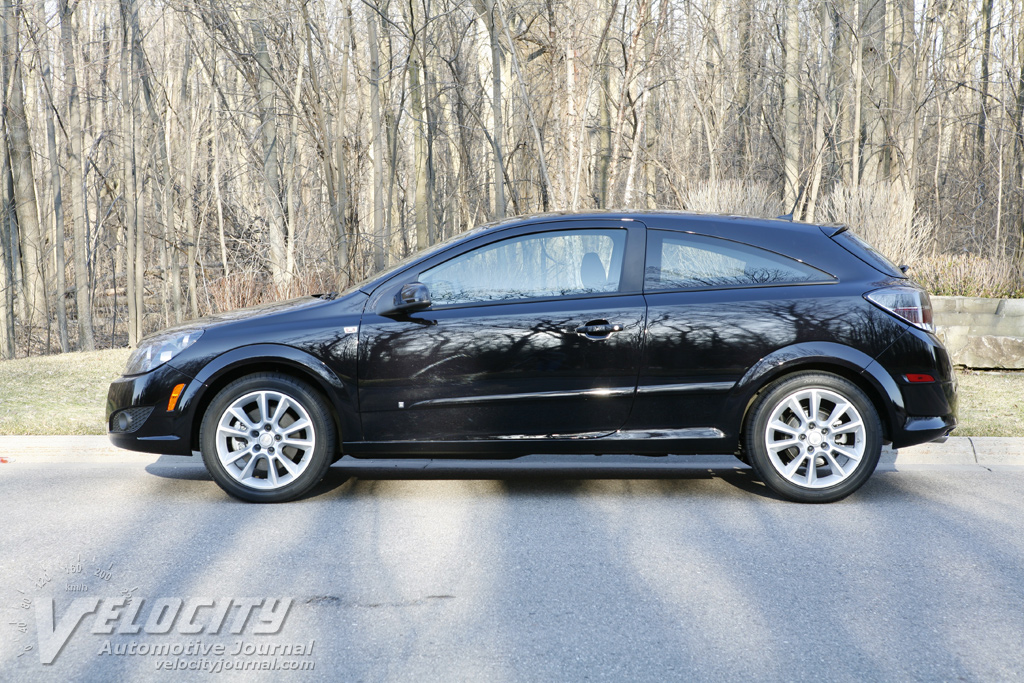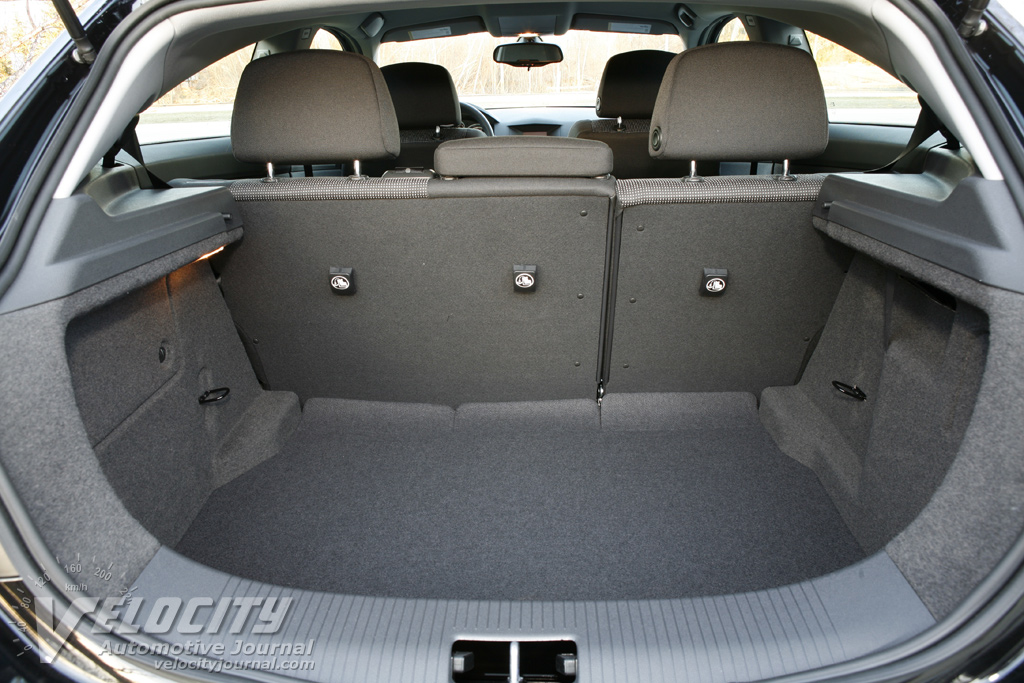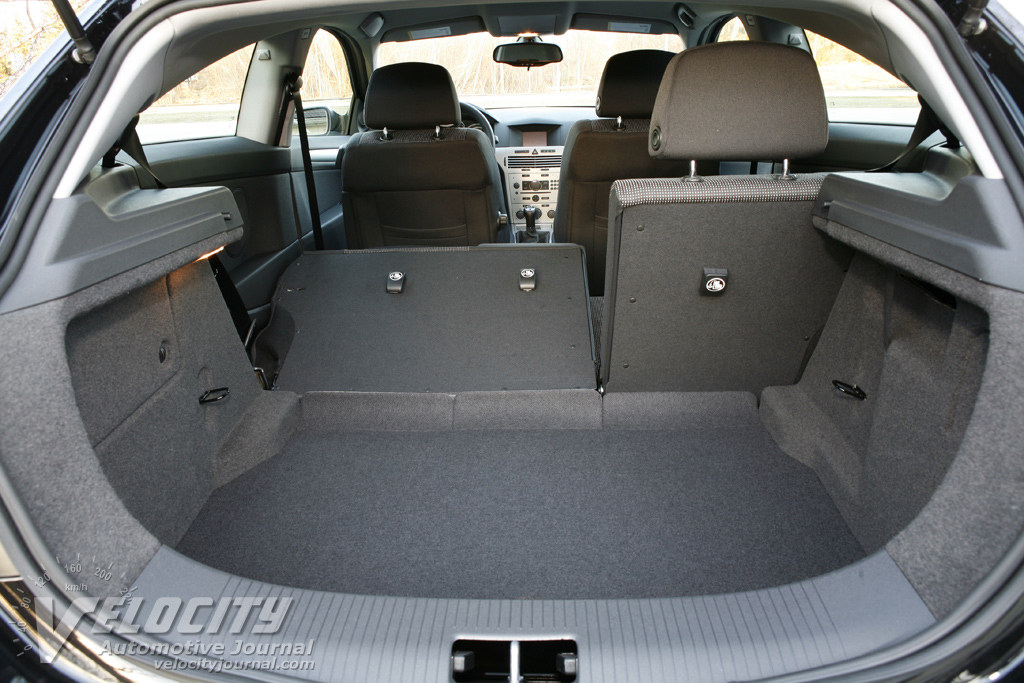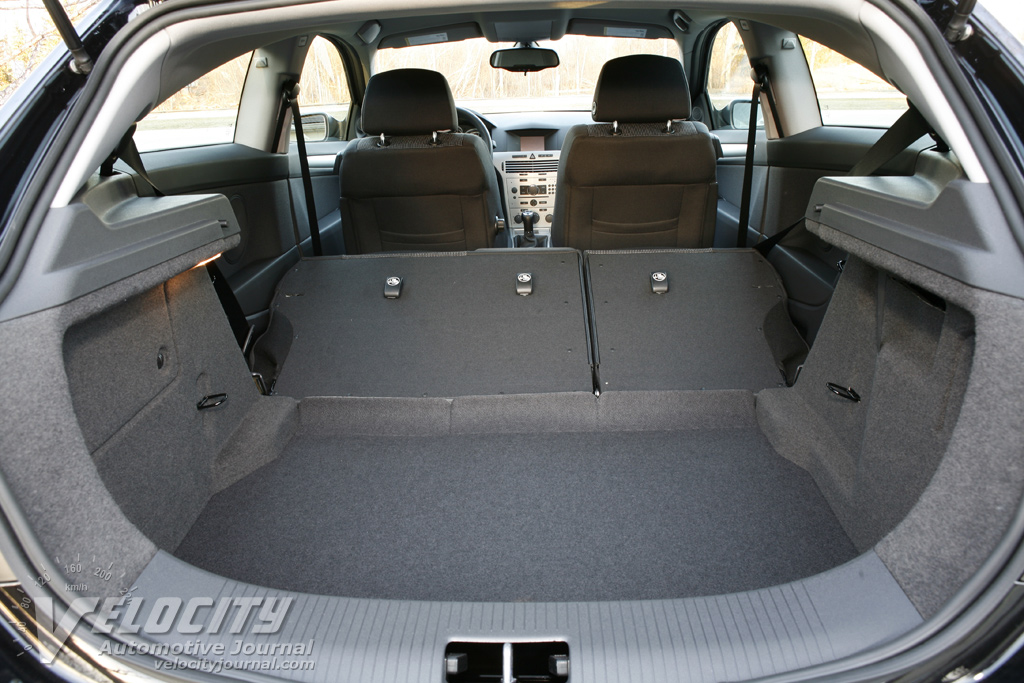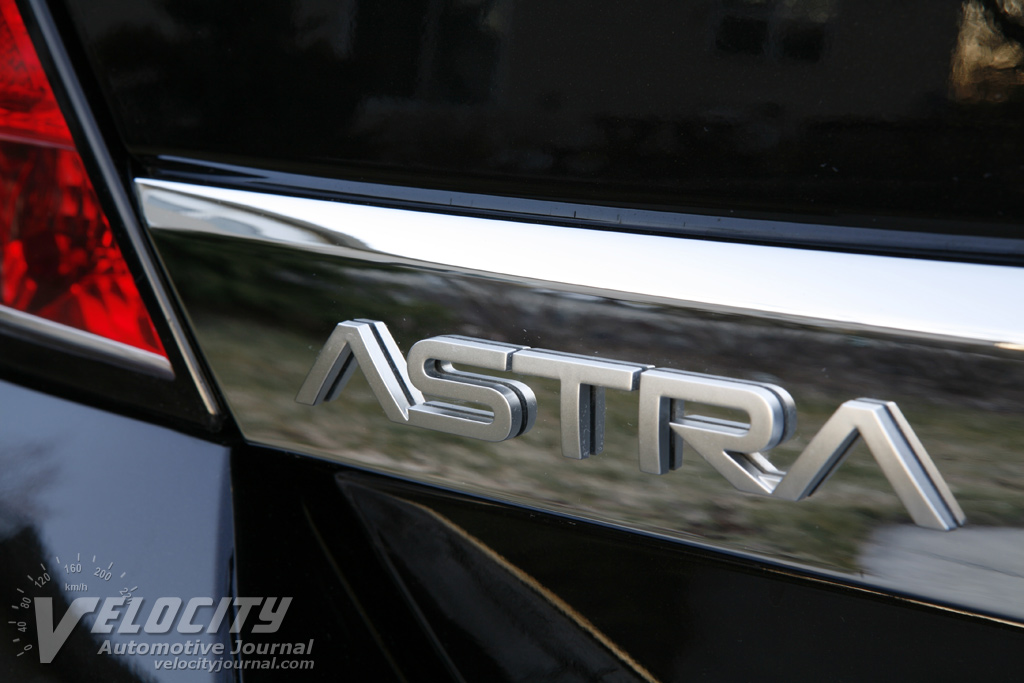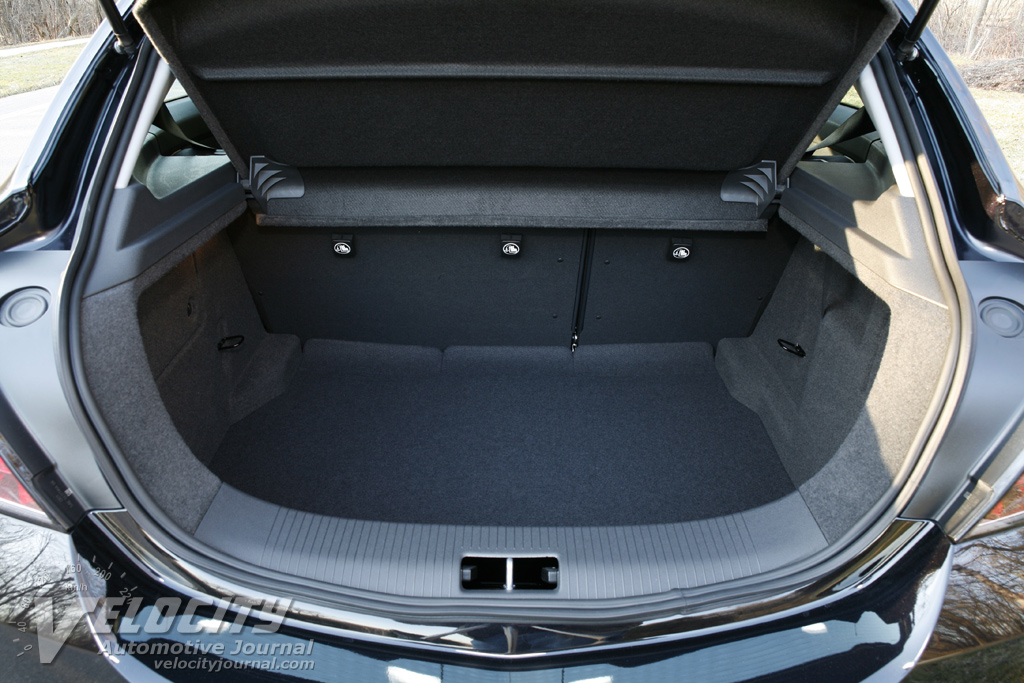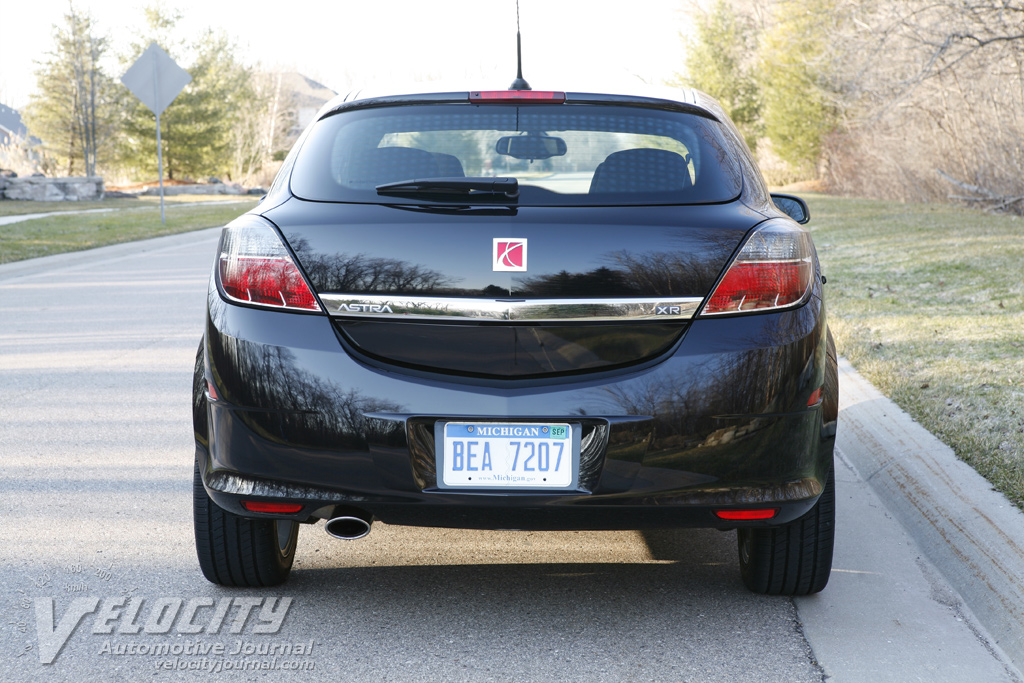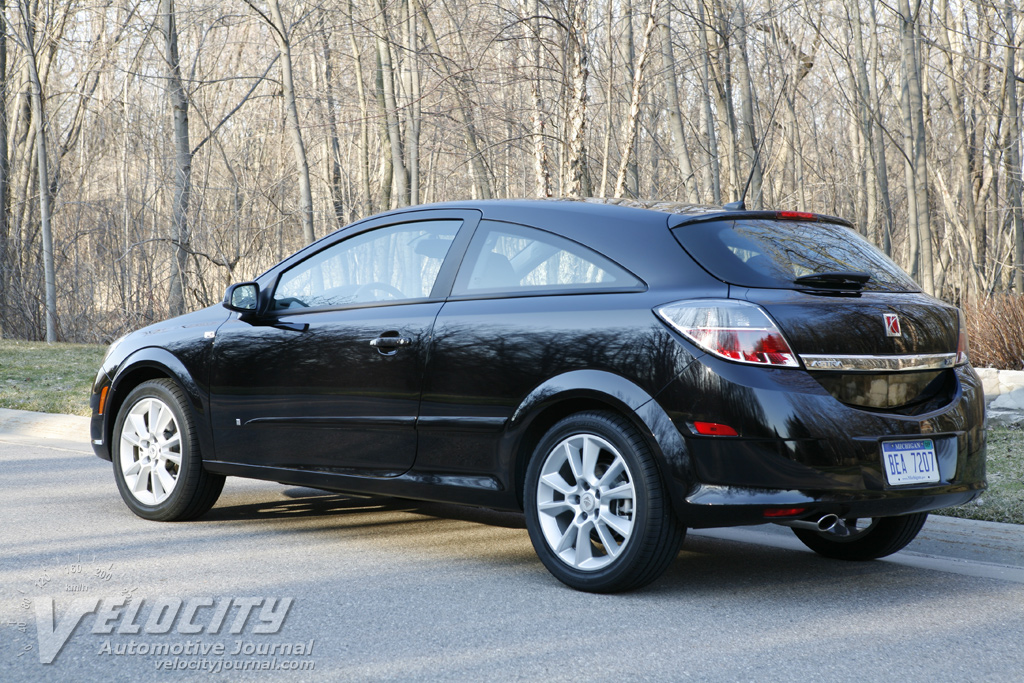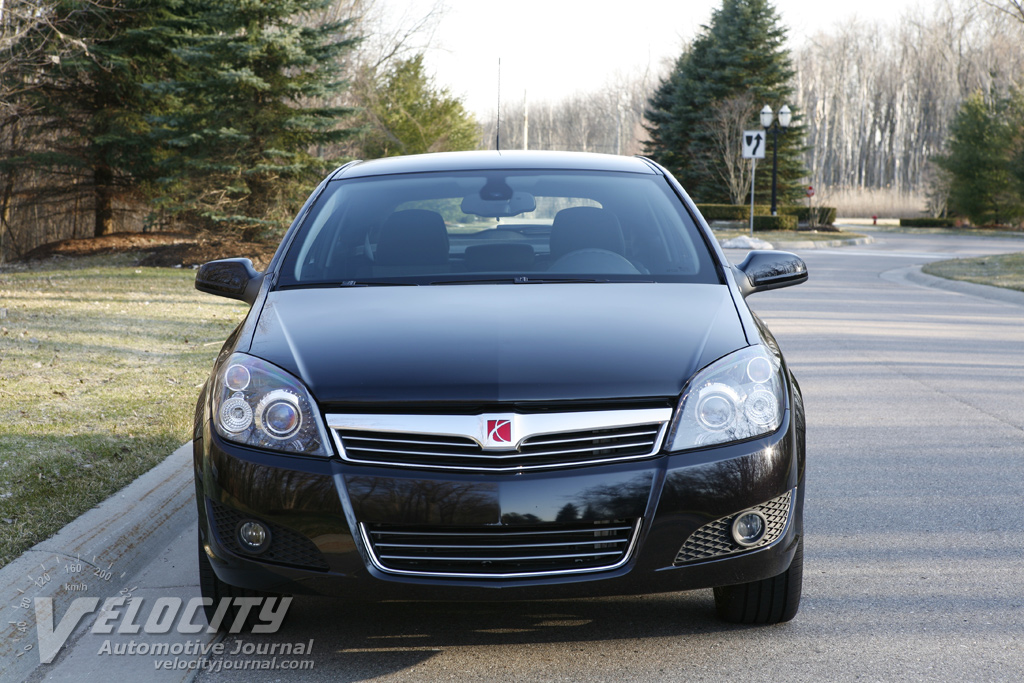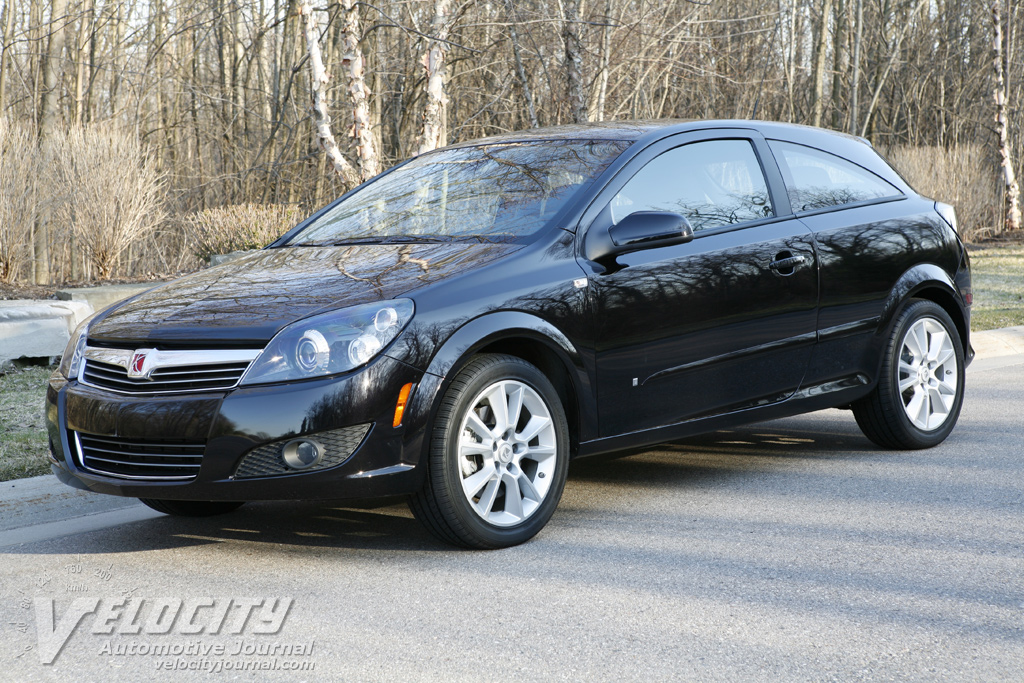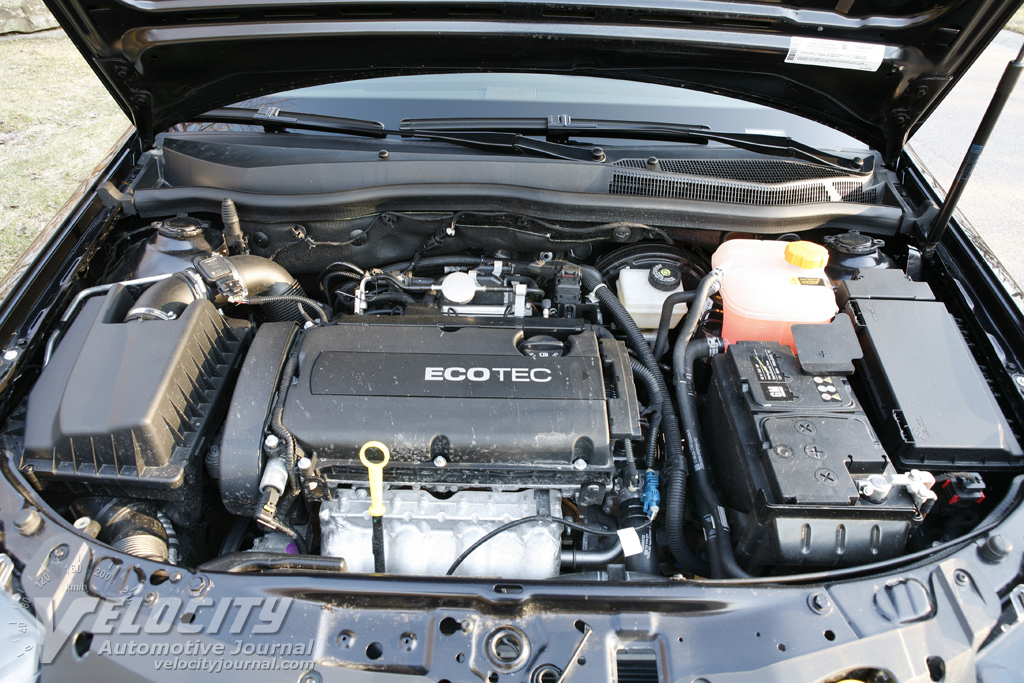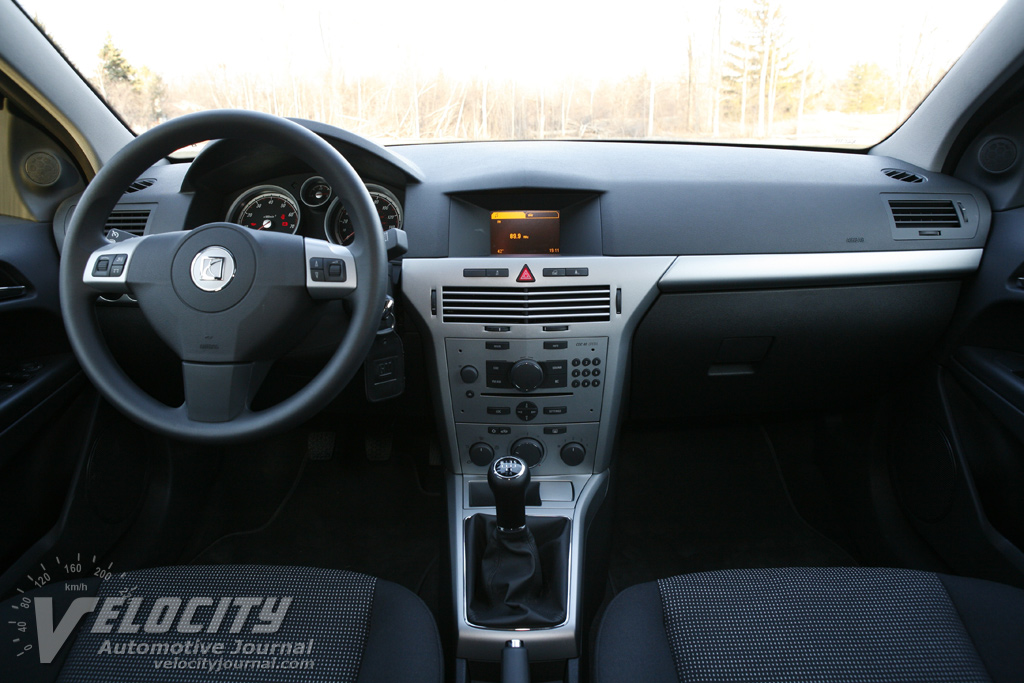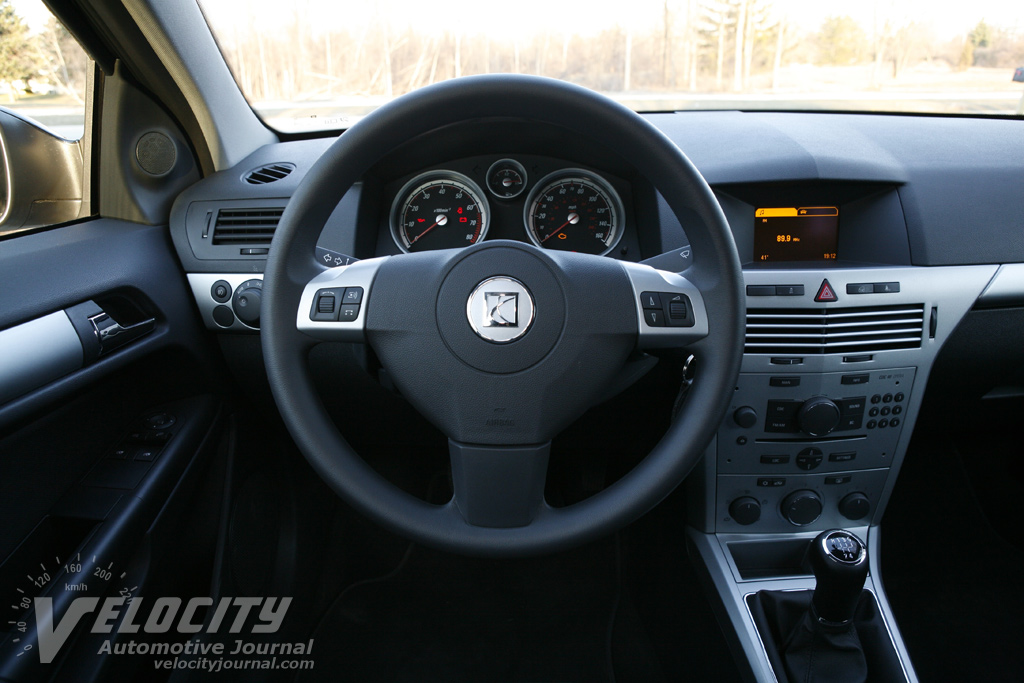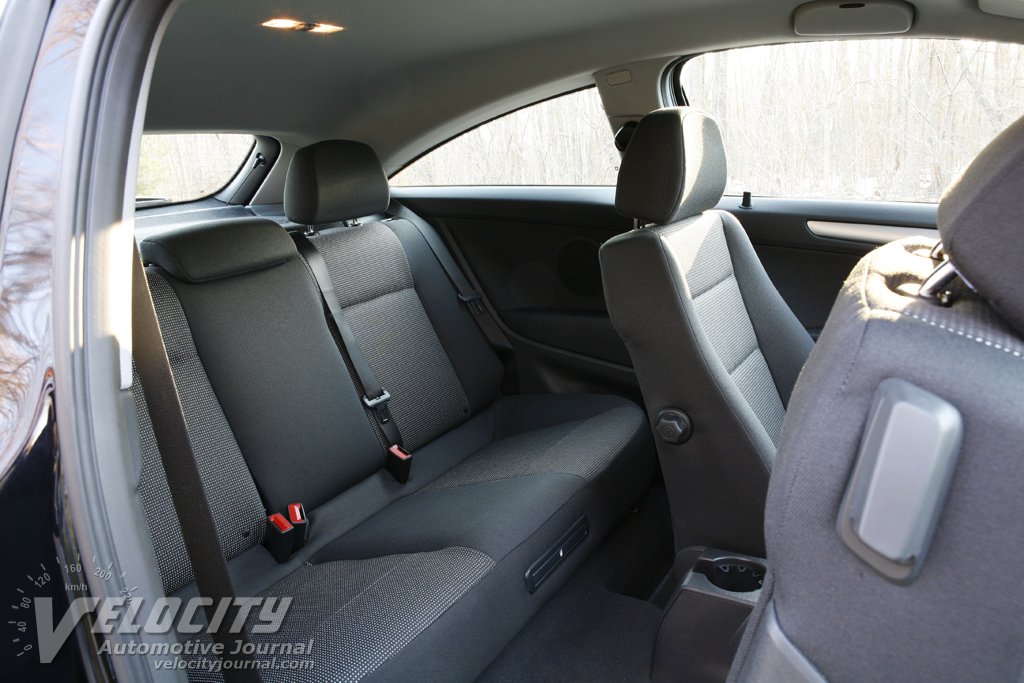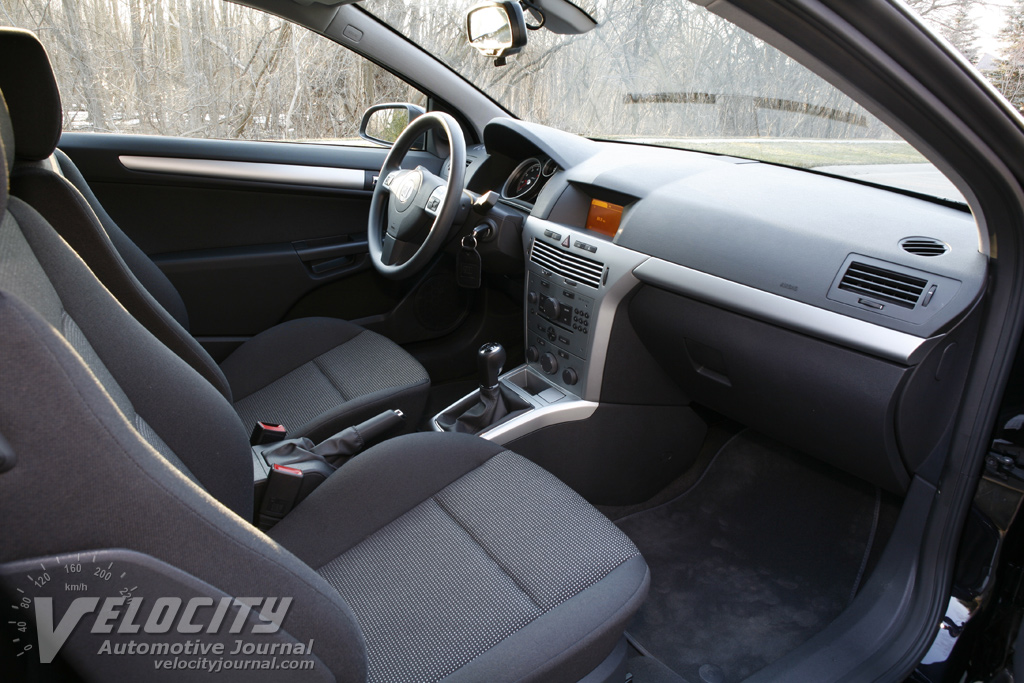2008 Saturn Astra XR
04/09/2008
Shahed Hussain
GM rarely imports European vehicles to the US, usually relying on North American or Asian-sourced cars and trucks to fill its dealer lots. A notable exception is the new Saturn Astra compact hatchback, a clone of the popular Opel Astra sold throughout Europe. As the successor to the poor-selling ION, the Astra offers a German-engineered alternative to the mostly Asian and American compact car choices. Available in 3-door and 5-door models, the Astra should appeal to urban customers who can appreciate the utility of this fuel-efficient hatchback.
Saturn aims the $18,995 Astra XR 3-door for enthusiasts, whereas the less-expensive 5-door model should be the volume seller. Our Black Sapphire painted Astra was upholstered in the standard charcoal cloth seats, and included the $595 Advanced Audio Package (6-disc CD changer, 7-speaker audio system). The total sticker price was $19,590. Other major options are the $945 Premium Trim Package (heated leather sport seats, leather-wrapped steering wheel, upgraded door trim), 18-inch alloy wheels ($495), heated cloth seats ($250), and the 4-speed automatic transmission ($1,325). If we were choosing options, we would have added the 18-inch alloy wheels (with performance tires), and the heated cloth seats. The total price for a Saturn XR with our preferred options would be $19,740.
The Astra's Opel-designed interior layout and ergonomics bear little resemblance to other Saturn vehicles. For instance, the turn signal stalk needs just a flick to turn on the blinker, but the stalk doesn't have a detent to lock it in position. Somewhat more puzzling is the absence of a temperature gauge, even though the instrument panel certainly has space for it. The Astra does have an 8,000 RPM tachometer and a 160-MPH speedometer, with a smaller fuel gauge nestled between them. Our base Astra XR didn't have the optional leather covering, but the standard plastic-rimmed wheel had a pleasingly fat rim. We found the symbols on the steering wheel-mounted controls rather cryptic, so we recommend reading the owner's manual thoroughly.
An amber multi-function LCD display shows audio system and trip computer information. Some of the audio controls were unintuitive and cumbersome, requiring too much button pushing to access basic functions such as CD selection, or bass and treble setting adjustments. Sound quality from the speakers was somewhat disappointing.
As one might expect from a German-designed vehicle, the Astra offers superb seats with excellent support. The driver's seat is fully manual for reach, rake, and height, but the standard lumbar adjustment knob is a much appreciated bonus. In contrast, the front passenger makes do with the typical 4-way seat controls. Front passenger up to 6-ft. tall will have not issue with headroom, as the Astra has no height-robbing sunroof. Above the driver's side window is a compartment for sunglasses. A single cupholder is somewhat inconveniently located behind the handbrake. Two rear passengers get above average accommodations, but add a third person and everyone will feel cramped. Rear legroom and headroom is acceptable for occupants under 6-ft. tall. Back seat passengers also benefit from cleverly hidden dual cupholders that slide out of the center seat cushion.
A 1.8L inline-4 powers all Astras; the Ecotec engine delivers 138-bhp at 6,300 RPM and 125 lb.-ft. @ 3,800 RPM. Mated to a standard 5-speed manual or 4-speed automatic, this inline-4 isn't particularly refined, with a harsh, metallic idle after a cold start. The underhood racket subsides quickly to a somewhat grumbling idle. In city traffic or on the highway, the buzzy engine note intrudes into the passenger compartment. While not overly objectionable, the iron-block Ecotec is notably unrefined compared to powerplants from Honda or Toyota. Despite its rough edges, the engine's small displacement ensures frugal fuel consumption: we averaged 28.6 MPG in mixed city/highway driving. The EPA estimate is 24/32 MPG (city/hwy.), which seems realistic based on our experience.
Behind the wheel, the Astra is an entertaining drive, although the 1.8L inline-4 lacks the low-end torque most Americans expect. Consider the 5-speed manual to be mandatory to extract maximum performance. Fortunately, shifter effort is light and positive, while the progressive clutch rewards the driver with smooth engagement. For novices, this 5-speed is an easy route to acquire manual transmission skills. Gearing is tailored for American driving, with a relatively short 3.94:1 final drive coupled to a 0.89:1 fifth gear ratio. At 75 MPH, the engine is spinning at a relatively high 3,600 RPM. Even though the inline-4 delivers 125 lb.-ft. of torque at a relatively low 3,800 RPM, a downshift to 4th gear is usually prudent for quick passing maneuvers. Part of the problem is the Astra's curb weight of 2,833 lbs., which is slightly heavier than the bigger Chevrolet Cobalt. More importantly, the Chevy has a 148-bhp/152 lb.-ft. 2.2L inline-4 under the hood, which would be a welcome substitution for this Saturn.
Saturn aims the 3-door Astra XR at a more sport-oriented customer, so the ride height is 15 mm lower, and the XR has a faster 14:1 steering ratio than base Astras. The front suspension consists of struts, control arms, and a stabilizer bar. At the rear is a torsion beam semi-independent axle. Disc brakes are at all four corners, with standard ABS and StabiliTrak stability control. Front vented rotors are 12.2-inch diameter, and rear solid rotors are 10.4-inch diameter. The powerful brakes inspire confidence, while a firm progressive pedal reminds us that in Europe, Astras are expected to survive high speed autobahn duty.
Astra XR models get Hankook Optimo 225/45R17 all-season tires; optional 215/45R18 summer tires on 18-inch alloy wheels are available. Like most front-drive cars, the Astra exhibits mild to moderate understeer in normal driving. The 63/47 F/R weight distribution, combined with the somewhat squirmy tires tend to discourage high cornering speeds. For prospective owners living outside the Snowbelt, we recommend a test drive in an Astra XR equipped with the 18-inch alloy wheel/summer tire package, as we found the standard Hankooks to understeer excessively. The sport suspension keeps dive and squat to a minimum, but the Astra could do with more roll control. Overall stability at highway speed is above average, although the chassis pitches noticeably over sharp bumps.
We were impressed with the Astra, which proved to be a nimble, practical hatchback for urban commuting. Despite its slightly underpowered engine, the Astra rewards drivers who don't mind rowing its slick 5-speed manual. However, this compact hatchback faces stiff competition from the more powerful Mazda3 and VW Rabbit, although the Saturn has the edge in fuel economy. Of course, it is significant that we actually compare the Astra to its Asian and German rivals, as the previous ION wasn't even in the same ballpark. If you can sacrifice some performance in exchange for superior fuel economy, the Astra is worth a look.

